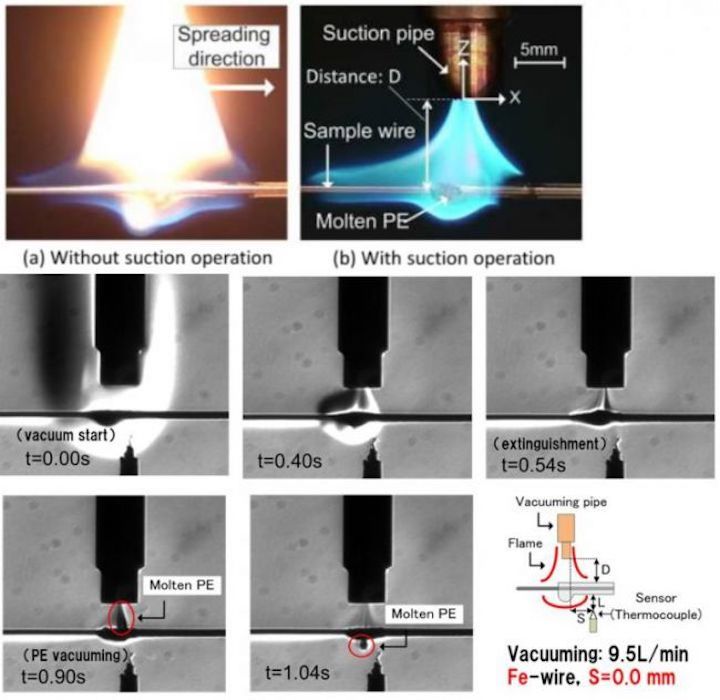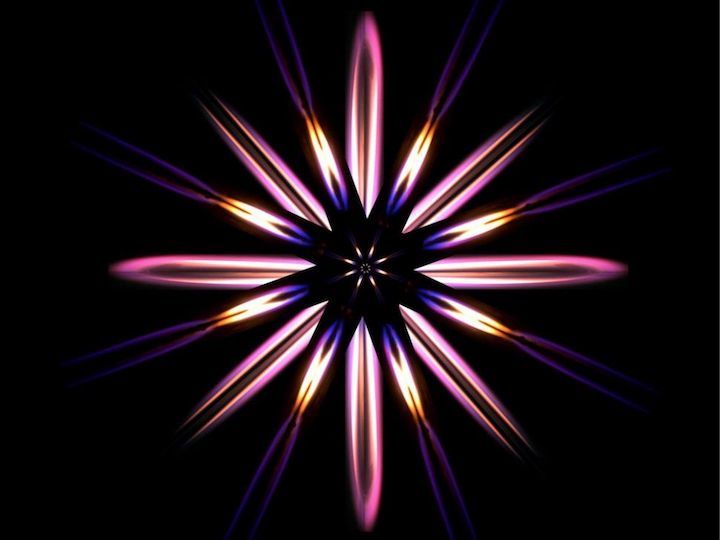Fire in space is a critical matter; a serious fire on the Mir space station in the 1990s almost caused the crew to evacuate. Complicating matters is that typical fire extinguishers may not be as effective in space, given the weird behavior of fire in microgravity.
Enter a solution: a new fire extinguisher made for space, designed by researchers at the Toyohashi University of Technology in Japan. It's called the Vacuum Extinguish Method, or VEM for short.
A typical fire extinguisher works by spraying carbon dioxide foam, which, if operated properly and quickly, will damp down any flames. In a statement, researchers working on the new extinguisher said this classic design is not an ideal solution for space, for at least two reasons. First, using carbon dioxide in a small space will increase concentration of the toxic gas in the spacecraft. That means astronauts need to quickly don oxygen masks to use it. In a fire, when seconds count, that could be a problem.

A test of the Vacuum Extinguish Method, created by researchers at Toyohashi University of Technology in Japan, shows that material generated by the flame such as soot as well as the burning source are pulled into a suction box.
The other issue is what happens when the fire is extinguished by spraying in microgravity. All of the combustion products, as well as the carbon dioxide from the fire extinguisher, float everywhere. Although spacecraft are typically equipped with filters for waste products, it's a time-consuming procedure to clean everything up, the researchers said.
VEM instead sucks the flames into a separate vacuum chamber, along with whatever caused the combustion. The researchers say this process would be helpful for any enclosed environment, including spacecraft and submarines. That's because VEM will "prevent or suppress spreading [of] the harmful combustion products such as fume, particulate matters, [or] toxic gas component across the entire enclosed cabin," researchers said in the statement.
Should the fire continue in the vacuum chamber, it at least gives those at risk a bit more time to follow more typical fire-extinguishing protocols, including donning oxygen masks, the researchers added. Using VEM would also reduce the damage to any air filters from particulate matter generated in the fire.
The innovative technology has not been accepted yet for space, added study leader Yuji Nakamura, a professor at Toyohashi. "At present, space agencies are wary to introduce this concept because no such device was developed and tested by them," he said in the statement.
"It is understandable that their decision-making is frequently based on safety so that older technologies — which are well-distributed and reassuring — are approved," he added. "However, it does not mean that the new concept has no possibility of being considered … We will continue to refine and present the concept."
A paper based on the research was published online April 16 in a special issue of the journal Fire Technology.
Quelle: SC


